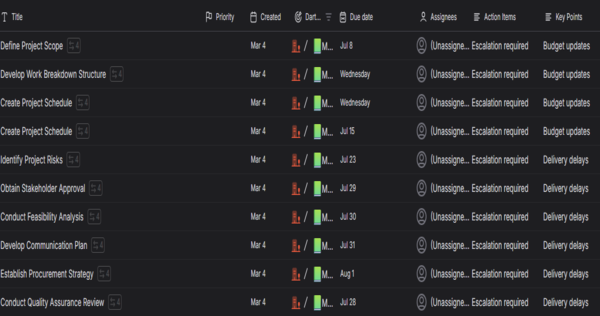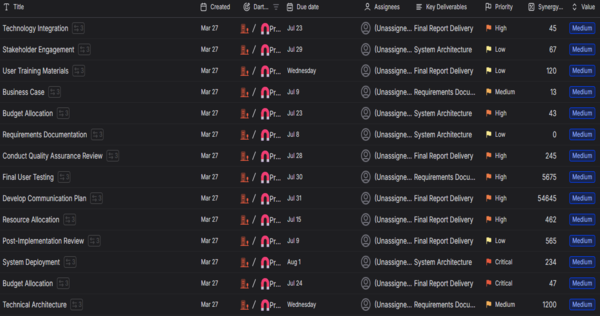Struggling to prevent risks from impacting your projects? Many teams react to risks when it’s too late - leading to delays, budget overruns, and missed objectives. Research shows that proactive risk management reduces project failures and improves decision-making speed.
Our risk management report template transforms uncertainty into actionable insights. It helps identify, assess, and mitigate risks before they derail success without drowning in guesswork.
The Hidden Flaw in Basic Risk Logs (And How to Fix It)
Most teams track risks in spreadsheets but fail to act strategically. A structured approach ensures risks are:
- Proactively monitored (not just logged)
- Quantified by impact & likelihood
- Linked to business outcomes
Ask yourself:
✔ Are we prioritizing the right risks?
✔ How do risks align with strategic goals?
✔ What controls are actually reducing exposure?
Think of risk management as your early-warning system - without it, you’re flying blind.
Master Risk Management with These 4 Non-Negotiables

Our framework breaks risk tracking into measurable, actionable steps:
1. Risk Identification & Categorization
Not all risks are equal. So, when you write a project risk assessment, categorize by:
- Strategic (alignment with goals)
- Operational (process failures)
- Financial (budget/cost risks)
- Compliance (regulatory gaps)
2. Impact & Probability Assessment
Move from "gut feeling" to data-driven prioritization:
- Risk scoring matrix (High/Medium/Low)
- Financial impact forecasting
- Stakeholder risk tolerance analysis
3. Mitigation & Response Planning
A risk log isn’t enough - define clear action plans:
- Avoidance (eliminate the risk)
- Mitigation (reduce impact/likelihood)
- Transfer (insurance/outsourcing)
- Acceptance (documented contingency)
4. Monitoring & Continuous Improvement
Risks evolve - your strategy should too:
- Real-time dashboards (DART integration)
- Quarterly risk review cycles
- Lessons-learned feedback loop
Implementing Risk Management Effectively
Tracking risks shouldn’t be a post-crisis activity. Build risk discipline into your workflow with:
✅ Automated Alerts - Set thresholds for high-priority risks.
✅ Stakeholder Transparency - Share real-time reports with teams.
✅ Historical Data Analysis - Learn from past risks to predict future ones.
Proactive Strategies for Reliable Risk Management
Risk management shouldn’t be an afterthought. It’s a discipline that separates high-performing teams from those stuck in firefighting mode. These battle-tested strategies ensure you stay ahead of threats, not behind them:
- Define Risks Upfront - Map potential threats before project kickoff.
- Quantify Everything - Use DART’s analytics to measure exposure.
- Assign Owners - Every risk needs a responsible party.
- Review Regularly - Update assessments monthly/quarterly.
Real-World Impact of Risk Management
You don’t have to take our word for it. Here’s how structured risk management delivers measurable results for organizations like yours:
- A financial services firm avoided a compliance penalty by identifying regulatory gaps early.
- A manufacturing company reduced unplanned downtime after implementing real-time risk monitoring.
- An e-commerce brand slashed supply chain delays by mapping alternative vendors in advance.
- A SaaS company prevented a data breach by proactively patching security vulnerabilities.
- A nonprofit maintained donor confidence by mitigating fraud risks before audits.
Take Control of Project Risks Today
Stop crossing your fingers and start managing threats systematically. Our template transforms risk management from wishful thinking to a quantified approach.
Get Your Template Now







